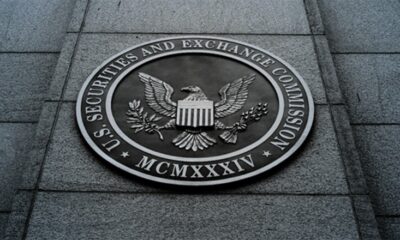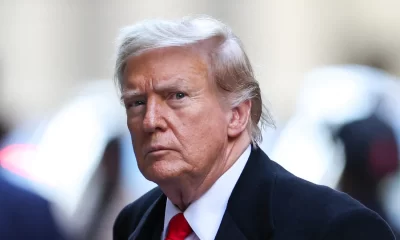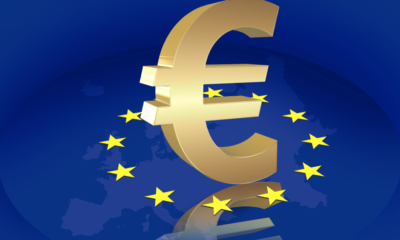Charles Hoskinson has revealed two critical solutions aimed at establishing Cardano as the backbone of a global financial operating system. In a recent announcement, Hoskinson outlined how these innovations will address existing challenges and propel Cardano to the forefront of the decentralized finance (DeFi) ecosystem.
The first solution is the Mithril protocol, designed to enhance the scalability and efficiency of Cardano’s blockchain. Mithril introduces a lightweight, multi-signature protocol that allows faster and more secure transactions by reducing the data needed for verification. This advancement aims to significantly improve transaction throughput, making Cardano more capable of handling large-scale financial applications.
Hoskinson emphasized that Mithril will play a crucial role in enabling Cardano to support a diverse range of financial services, from microtransactions to complex smart contracts. By optimizing data handling and validation processes, Mithril seeks to provide a robust foundation for the global financial system envisioned by Cardano.
The second solution involves the implementation of sidechains, which are secondary chains running parallel to the main Cardano blockchain. Sidechains will allow for interoperability with other blockchain networks, facilitating seamless asset transfers and interaction between different ecosystems. This innovation is expected to expand Cardano’s reach and utility, integrating it more deeply into the broader blockchain landscape.
Hoskinson highlighted the importance of sidechains in achieving Cardano’s goal of becoming a universal platform for financial applications. By enabling cross-chain compatibility, sidechains will allow Cardano to interact with various digital assets and blockchain networks, enhancing its versatility and appeal to developers and users alike.
These two solutions, Mithril and sidechains, represent significant strides in Cardano’s mission to build a comprehensive and inclusive financial operating system. As the Cardano network continues to evolve, these innovations are poised to address scalability and interoperability challenges, positioning Cardano as a leading player in the global DeFi space.
In summary, Charles Hoskinson’s announcement of Mithril and sidechains marks a pivotal moment for Cardano. These solutions aim to enhance the blockchain’s scalability, efficiency, and interoperability, driving its adoption as a global financial operating system. As Cardano implements these innovations, the project is set to strengthen its position within the competitive DeFi ecosystem.
Cardano founder Charles Hoskinson has revealed two critical solutions aimed at establishing Cardano as the backbone of a global financial operating system. In a recent announcement, Hoskinson outlined how these innovations will address existing challenges and propel Cardano to the forefront of the decentralized finance (DeFi) ecosystem.
The first solution is the Mithril protocol, designed to enhance the scalability and efficiency of Cardano’s blockchain. Mithril introduces a lightweight, multi-signature protocol that allows faster and more secure transactions by reducing the data needed for verification. This advancement aims to significantly improve transaction throughput, making Cardano more capable of handling large-scale financial applications.
Hoskinson emphasized that Mithril will play a crucial role in enabling Cardano to support a diverse range of financial services, from microtransactions to complex smart contracts. By optimizing data handling and validation processes, Mithril seeks to provide a robust foundation for the global financial system envisioned by Cardano.
The second solution involves the implementation of sidechains, which are secondary chains running parallel to the main Cardano blockchain. Sidechains will allow for interoperability with other blockchain networks, facilitating seamless asset transfers and interaction between different ecosystems. This innovation is expected to expand Cardano’s reach and utility, integrating it more deeply into the broader blockchain landscape.
Hoskinson highlighted the importance of sidechains in achieving Cardano’s goal of becoming a universal platform for financial applications. By enabling cross-chain compatibility, sidechains will allow Cardano to interact with various digital assets and blockchain networks, enhancing its versatility and appeal to developers and users alike.
These two solutions, Mithril and sidechains, represent significant strides in Cardano’s mission to build a comprehensive and inclusive financial operating system. As the Cardano network continues to evolve, these innovations are poised to address scalability and interoperability challenges, positioning Cardano as a leading player in the global DeFi space.
In summary, Charles Hoskinson’s announcement of Mithril and sidechains marks a pivotal moment for Cardano. These solutions aim to enhance the blockchain’s scalability, efficiency, and interoperability, driving its adoption as a global financial operating system. As Cardano implements these innovations, the project is set to strengthen its position within the competitive DeFi ecosystem.

 Business3 days ago
Business3 days ago
 Business1 week ago
Business1 week ago
 Business3 days ago
Business3 days ago
 Business7 days ago
Business7 days ago
 Business7 days ago
Business7 days ago
 Business6 days ago
Business6 days ago
 Business7 days ago
Business7 days ago
 Business6 days ago
Business6 days ago

























